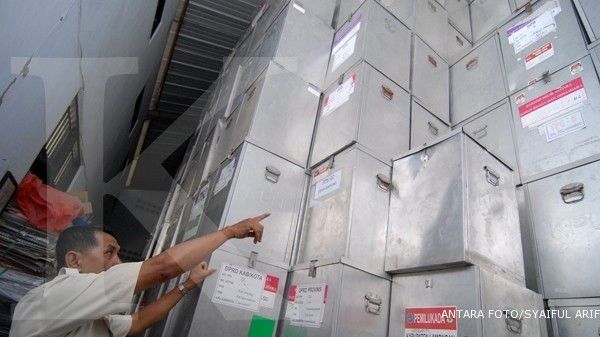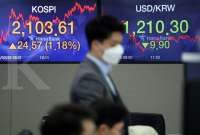JAKARTA. Within less than a year to go until its establishment, the ASEAN Economic Community (AEC) will merge the economies of the 10-member ASEAN regional bloc into a unified production, trade and investment area. Statistically, the bloc will have a combined population of approximately 600 million, with an aggregate gross domestic product (GDP) of at least US$2.2 trillion and trade of more than $2.4 trillion.
As explained in the AEC blueprint, the integration will create an ASEAN single market and production base comprising five core elements, namely the free flow of goods, services, investment, capital and skilled labor.
According to the blueprint, the banking industry in each ASEAN country will have to face challenges, adapt to demand and make the necessary adjustments to ensure that the banking industry can take advantage of a number of new opportunities.
As a key player in Indonesia’s banking industry, the country’s Islamic banks will certainly be influenced by the AEC. There are two questions that need to be answered: To what extent are Indonesia’s Islamic banks fulfilling their role? And what measures do they need to take to face the upcoming competition?
Islamic banking in Indonesia assumes three forms of banking institution: Islamic commercial banks, Islamic business units and Islamic rural banks. Data from Bank Indonesia (BI) shows the growth of these three types of institutions in the last three years.
There is no single approach to handling potential problems ahead of the launch of the AEC. There should be at least three approaches, namely systematic, capital and communication. In a systematic approach, there should be an effort to raise public awareness that problem-solving cannot be carried out purely at a personal or institutional level. Systematically speaking, it is not right that responsibility should be assumed by one particular group or party.
On the contrary, collective measures should be introduced to assist Indonesian Islamic banks successfully prepare for the AEC. Responsibility lies with several parties, such as the Finance Ministry; BI; the Education and Culture Ministry; the Indonesian Ulema Council (MUI), which represents the nation’s Muslim community; the Financial Services Authority (OJK); national associations related to Islamic banking, and the country’s mass media.
The first step for the parties involved is to have a national agenda to agree on the grand design or master plan on what and how to increase the market share, financial performance, competitive advantages, and apply the integrated technology. The detailed plan and the implementation proportionally go to all parties involved. Unfortunately, such systematical approach doesn’t seem to be taken care of well.
Islamic banks can not only exist but also have a significant market share if their capital increases. There are three options to increase the capital: the government is suggested to have a state-owned Islamic Commercial Banks, the government selectively takes the offer of the giant international banks to open an Islamic Commercial Bank or an Islamic Business Unit, and the government wisely makes the best use of the funds from the Muslim community, that is zakat, wakf, and hajj. According to BAZNAS (national board of zakat), the national potential of zakat reaches Rp 270 trillion annually. The funds from the waiting list of the hajj can reach about Rp. 50 trillion. However, the options deal with the adjustment of the regulations.
In term of the communication approach, Indonesian Islamic banks should have smart communication. Islamic banking has to be communicated in such a way that people of different beliefs can accept and a negative perception or misunderstanding will fade out.
So far, with three forms of Islamic banks, Indonesian Islamic banks have 4-5 percent of the banking market share for a population of around 237 million.
How far the influence of the AEC has on the Indonesian Islamic banks can exactly be known when their market share in Indonesia decreases and cannot expand in the members of the AEC with a combined population of approximately 600 million. (Muizzudin)
Impact of AEC on Indonesia’s Islamic banks
May 05, 2014, 01.18 PM
/2011/11/16/701550927p.jpg)
Roti Gembong Gedhe.
Source: The Jakarta Post
| Editor: Asnil Amri
Latest News
-
January 02, 2026, 03.24 PM
Asia Stocks Start 2026 Strong; Taiwan, South Korea & Singapore Hit Records
-
December 31, 2025, 10.53 AM
GLOBAL MARKETS-Asian Stocks Set for Strongest Annual Jump in Eight Years on AI Bets
-
December 31, 2025, 05.38 AM
Wall Street Closes Slightly Lower Near The End of a Banner Year; Gold Rebounds
-
December 30, 2025, 04.46 PM
Indonesia's Free Meal Scheme to Reach 80 Million Recipients by April, Behind Target
-
December 29, 2025, 10.13 PM
Wall Street Falls as Tech Rally Falters in Final Week of 2025
-
December 29, 2025, 02.23 PM
Asian Stocks Rise, Precious Metals Hit Records on Fed Rate Cut Bets
-
December 27, 2025, 04.19 PM
Moscow Sentences Russian Diplomat to 12 Years for Passing Secrets to U.S Intelligence
-
December 24, 2025, 05.47 PM
MGMC 2025 Highlights Moscow’s Global MICE Readiness—Can Indonesia Follow?
-
December 24, 2025, 05.17 AM
GLOBAL MARKETS-Equities Rise after Strong US Data, Yen Firms on Currency Warnings













